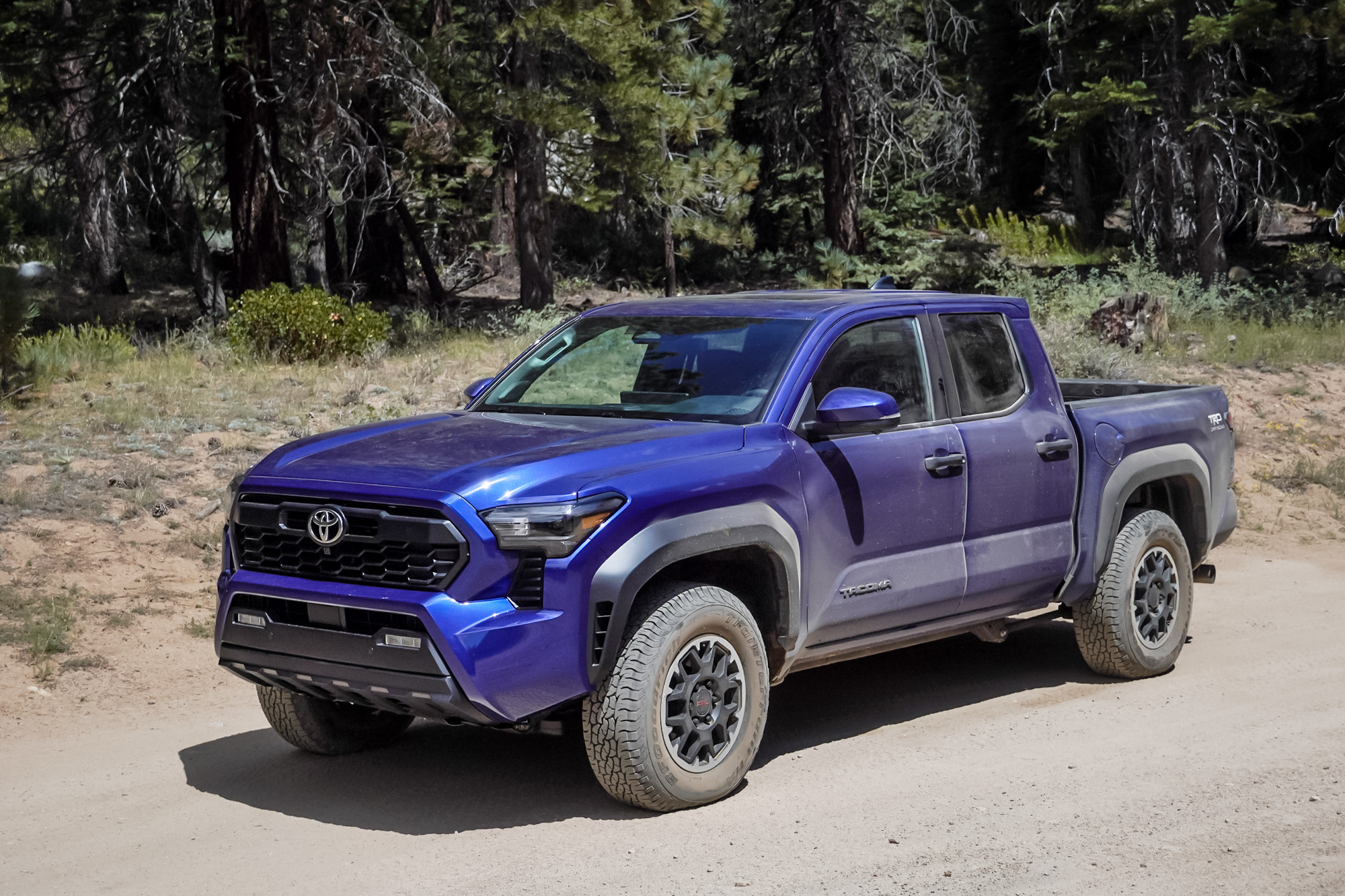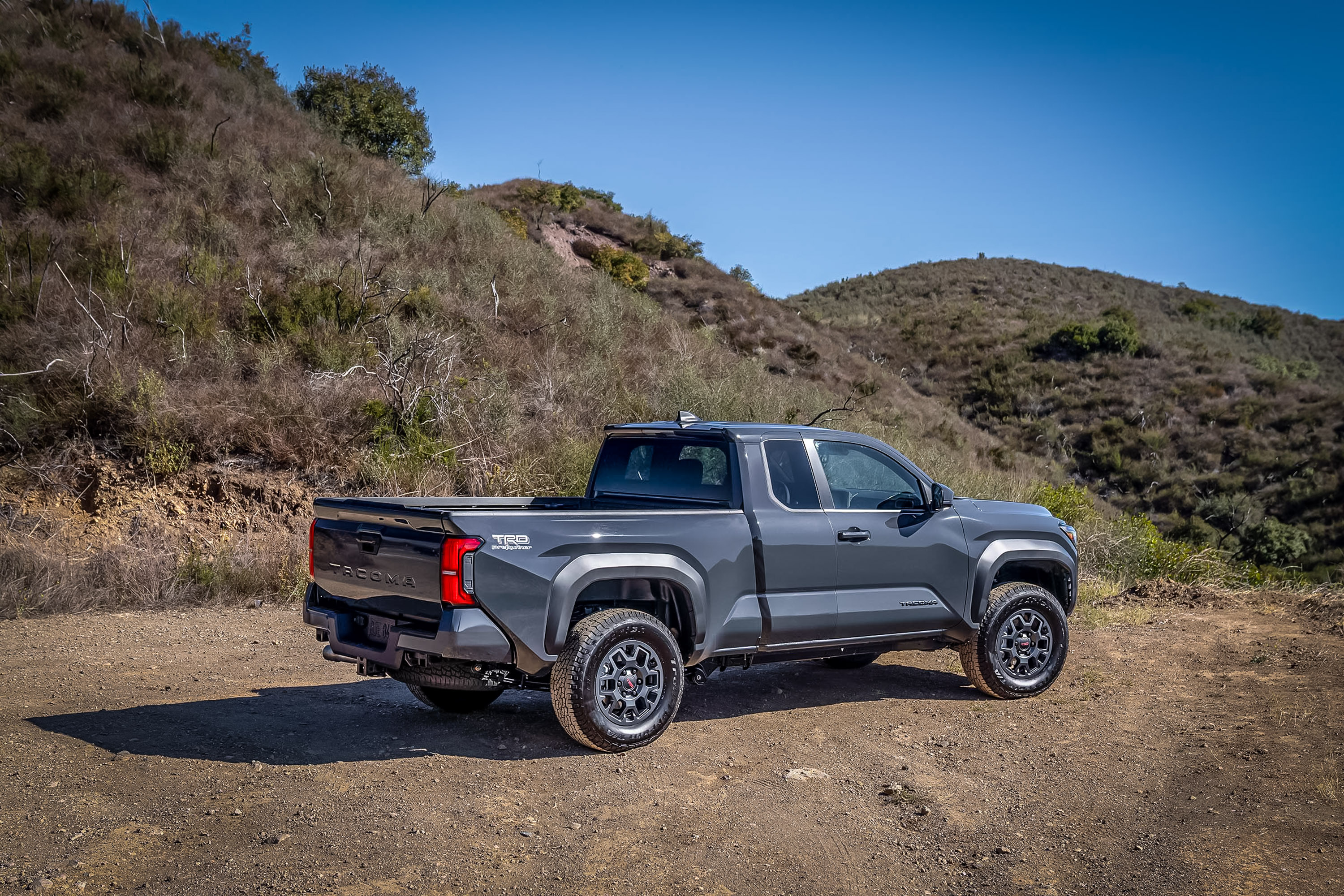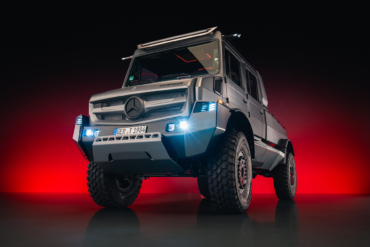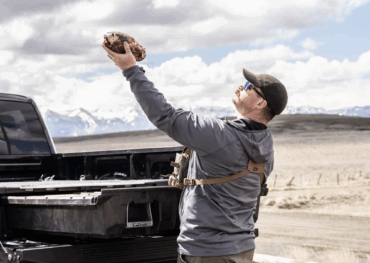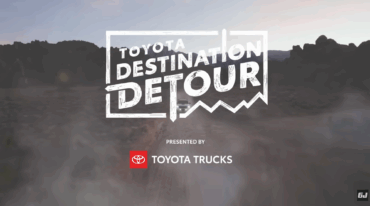The fourth-generation Toyota Tacoma arrived this year with options including a hybrid engine, fancy new seats, and adjustable shocks. The infotainment system also took a huge step forward, within a slightly more ergonomic dashboard. And, diehard Taco fans will no doubt appreciate that a manual transmission still exists in the lineup.
But the Tacoma has always been more about simple capability than a list of optional features, even for the top TRD trims. That should make the stick-shift and turbo-4 a desirable combination.
The manual is available with the TRD Off-Road package, and as soon as I heard the news, I immediately started looking forward to testing out this new generation. So when a manual TRD Off-Road loaner arrived this summer, I promptly headed out on a long road trip with 2 nights of camping in the Sierra Nevada mountains, including some solid dirt trails.
In short: Toyota surprisingly still offers the fourth-gen Tacoma with a stick shift. But, unfortunate gear ratios and computerized control of other features render the manual pointless, especially while off-roading. And, fuel economy numbers matter less given the availability of the hybrid engine option.
- Engine: Turbocharged 2.4L inline-4
- Transmission: 6-speed manual w/ 2-speed transfer case
- Horsepower/Torque: 278 hp / 317 lb.-ft.
- Fuel economy (claimed): 18/23 mpg
- Fuel economy (observed): 19-22 mpg
- Top speed: 106 mph
- Weight: 4,650 lbs.
- Dimensions: 213” L, 74.6” H, 77.9” W (without mirrors)
- Ground clearance: 9.5"
- Approach/departure/breakover: 32.5/22.2/24.7 degrees
- Bed size: 5' (6' optional on some trims)
- Price: $41,800 base ($53,890 as tested)
Pros
- Improved connectivity and dashboard ergonomics for the modern era
- Toyota build quality, does not creak or rattle at all while off-roading
- The stick shift survives for another generation!
Cons
- Very unfortunate gear ratios
- Tiny backseat offers minimal storage solutions
- Top trims only come in crew cab with 5-ft. bed
2024 Toyota Tacoma TRD Off-Road Manual Review

Revisiting the Previous Tacoma
One of the main reasons I wanted to try out the new Tacoma in a manual was because of how much I thought the stick shift helped the third-gen. The automatic simply paired badly with the V6, which short-shifted for fuel economy and hunted for gears constantly.
The manual’s long shift lever featured a crisp throw and positive engagement. Plus, the clutch pedal firmness and travel matched perfectly. Driving the stick shift, I held gears farther into the torque curve of the V6, where the engine started feeling peppy. In short, the manual transformed that pickup truck into a sports car.
Not so for this fourth-gen, which I unfortunately discovered quite quickly.

Adjusting to the New Stick Shift
In contrast to the outgoing truck, the fourth-gen’s shift lever almost feels flimsy and flexible. It does enter the shift gates easily still, but the clutch pedal is far lighter too. This might be good for stop-and-go traffic, but not for confident shifting. And the clutch itself made bad noises regularly anytime I tried to shift quickly.
The sound from the engine bay wasn’t quite a grind and not quite a rattle, but it definitely caused concern. And it only got worse when I tried to feather in power while letting out the clutch at speed, too.
The engine itself lacks low-end grunt, and needs the turbo desperately to build boost. Once past about 2,500 rpm, the torque starts to build strongly toward the 317-pound-feet maximum. But the redline is only just past 5,000 rpm — for a modern inline-4, that’s almost laughable. Meanwhile, downright perplexing gear ratios exacerbate the impression that the engine simply lacks fortitude.
To find power in first gear, I needed to rev up well past 4,000 rpm. But then, partially because I learned to avoid shifting quickly to prevent the clutch from making the weird noises, I wound up letting out the clutch pedal with the transmission now in second gear, well below 2,000 rpm. And there, the four-banger’s lack of power caused a disconcerting forward lurch. Every single time, no matter how smoothly I let out the clutch.
Third gear feels more reasonable, and the third to fourth shift is this Tacoma’s happy place. But the ratios from fifth to sixth are so close as to be almost useless. A taller sixth gear for highway cruising would have made much more sense.

Off-Roading the Manual TRD Off-Road
Once I reached the start of the first trail out to Monache Meadows, I stopped to air down the BFGoodrich Trail Terrain T/A tires to about 22 psi. This would be my first time off-roading on this route, and I didn’t know quite what to expect. But a friend told me he had seen nothing too technical earlier in the summer.
I started out in 4-High, but found myself constantly shifting between first and second gear on slower segments. Instead, I preferred keeping the transfer case to low range so that I spent most of the time shifting between third and fourth. The gearing doesn’t quite match a Wrangler/Gladiator or Bronco for crawling, so second gear did the trick on any of the moderately technical aspects of this trail out to the campsite.
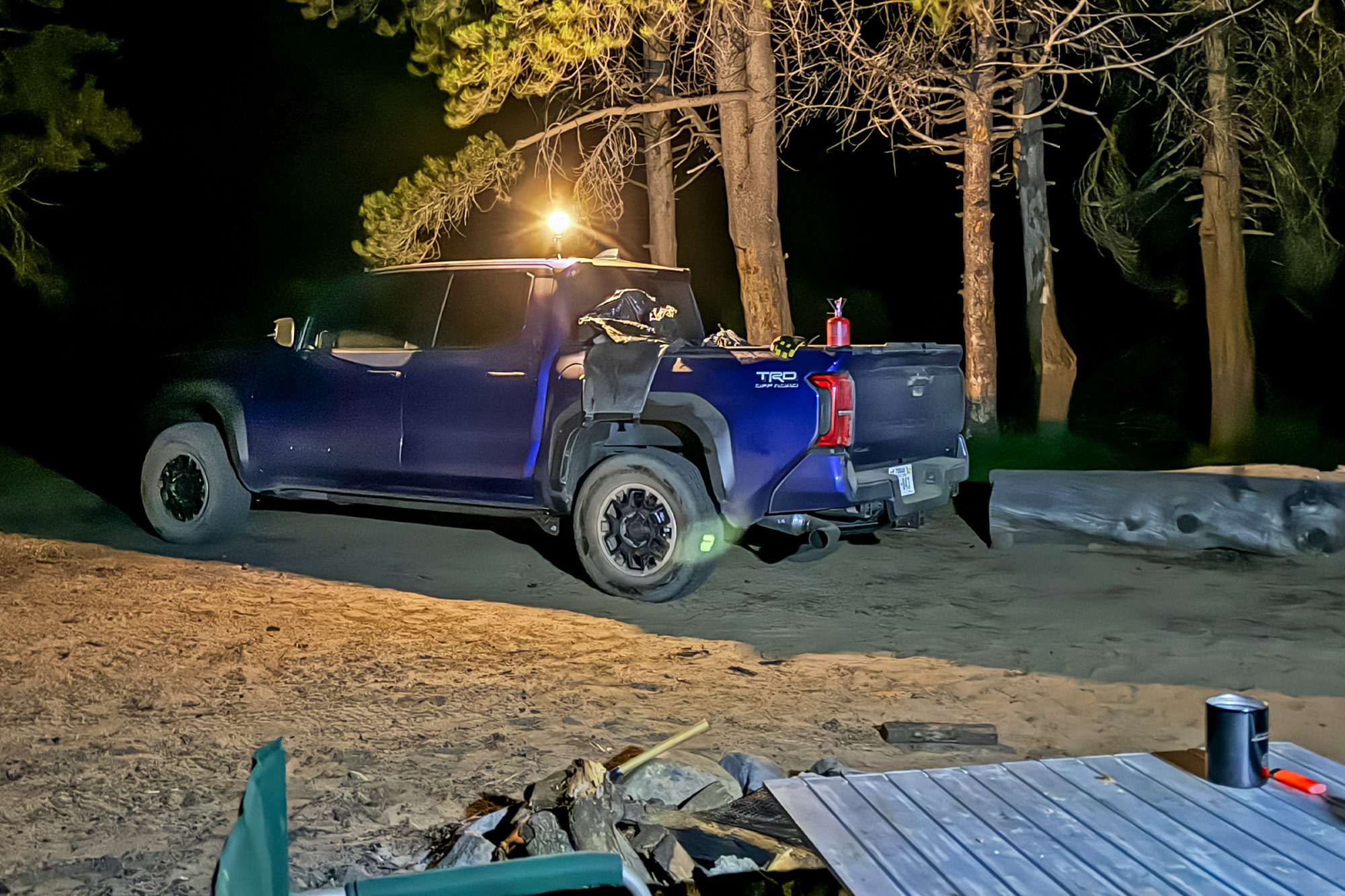
Discovering Some Weird Decisions
On the way back to asphalt the next morning, I discovered a major flaw. To start with, every manual car should come with a manual handbrake. We know this for drifting sports cars but also for hill starts. The latter applies doubly while off-roading, so it’s sad that the stick-shift Taco only comes with an electric parking brake.
But even worse, I discovered that the parking brake will not activate on steep inclines. A warning pops up on the dash saying “Steep Slope / Park on Flat Road” instead. This happened when I tried to pose the truck on the most dramatic portion of the trail for photos. But more importantly, if I had actually gotten stuck, the e-brake would now be useless.
No hope of getting out to spot my line in advance without turning the truck off and using the transmission to keep it in place. And no using my left foot on the clutch and right foot on the gas, while letting out the hand brake to get going. This is literally the exact opposite of what you want.
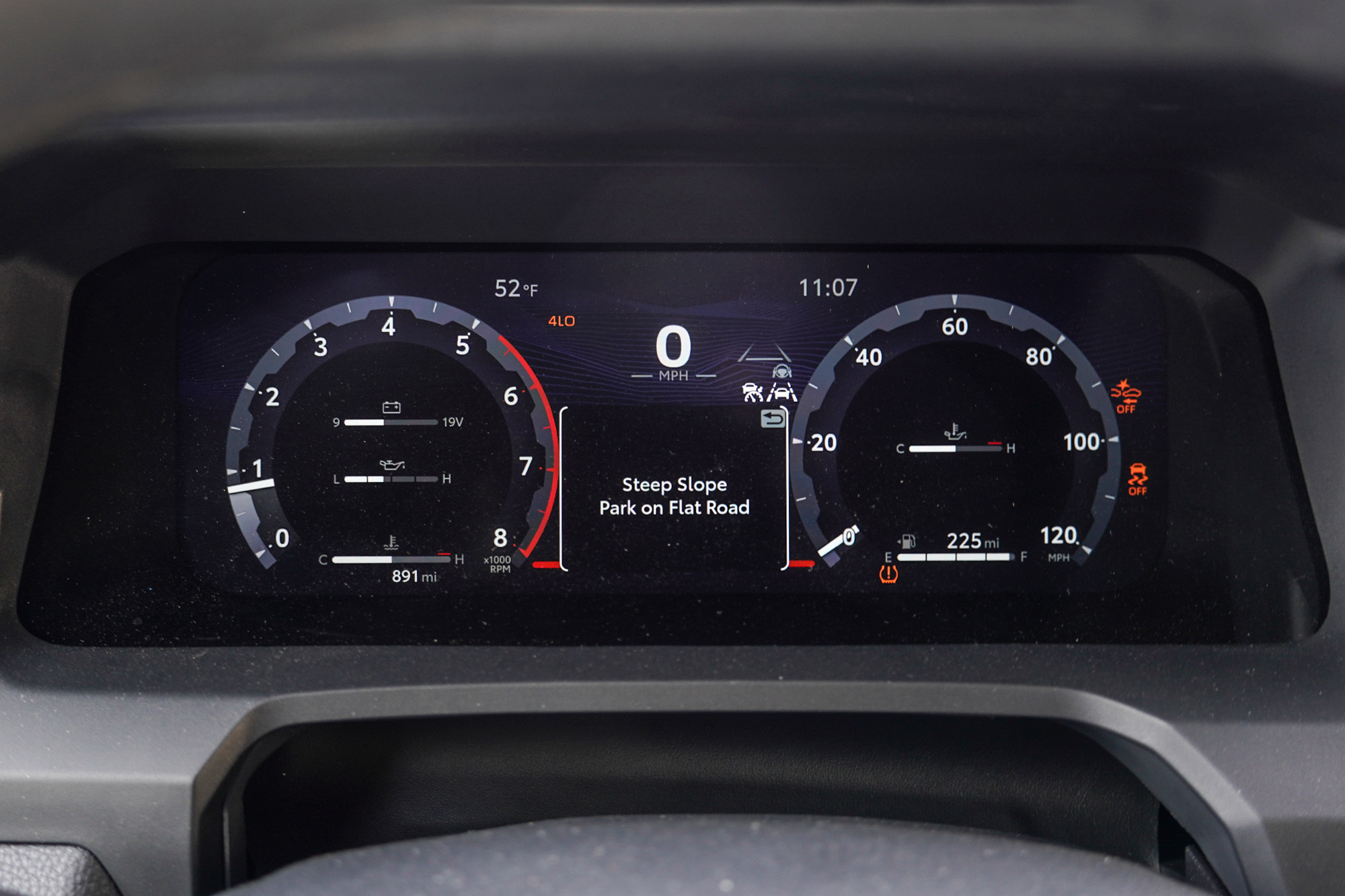
Meanwhile, the hill hold assist function also doesn’t work properly for a manual, either. It should disengage once the truck starts moving, via a wheel speed sensor. Instead, the second I touched the clutch pedal with an ounce of pressure, the hill hold turned off. Which meant I needed to then push in the pedal all the way and release it as quickly as possible, while trying to give a bit of gas before I started sliding backward. (Remember, the e-brake can’t help.)
In the end, I needed to heel-toe the brake and gas while at a dead stop. It’s doable, but not great in 4-Low and especially with a little turbo engine that has no torque until the boost builds. In this case, the automatic would undoubtedly perform better. And the torque-monster hybrid version even better still.
Some people might say the manual Tacoma isn’t for rock crawling anyway. Even still, these are weird decisions made by Toyota’s development team. And all the more so given the decision to retain a manual transmission as an option in the first place.
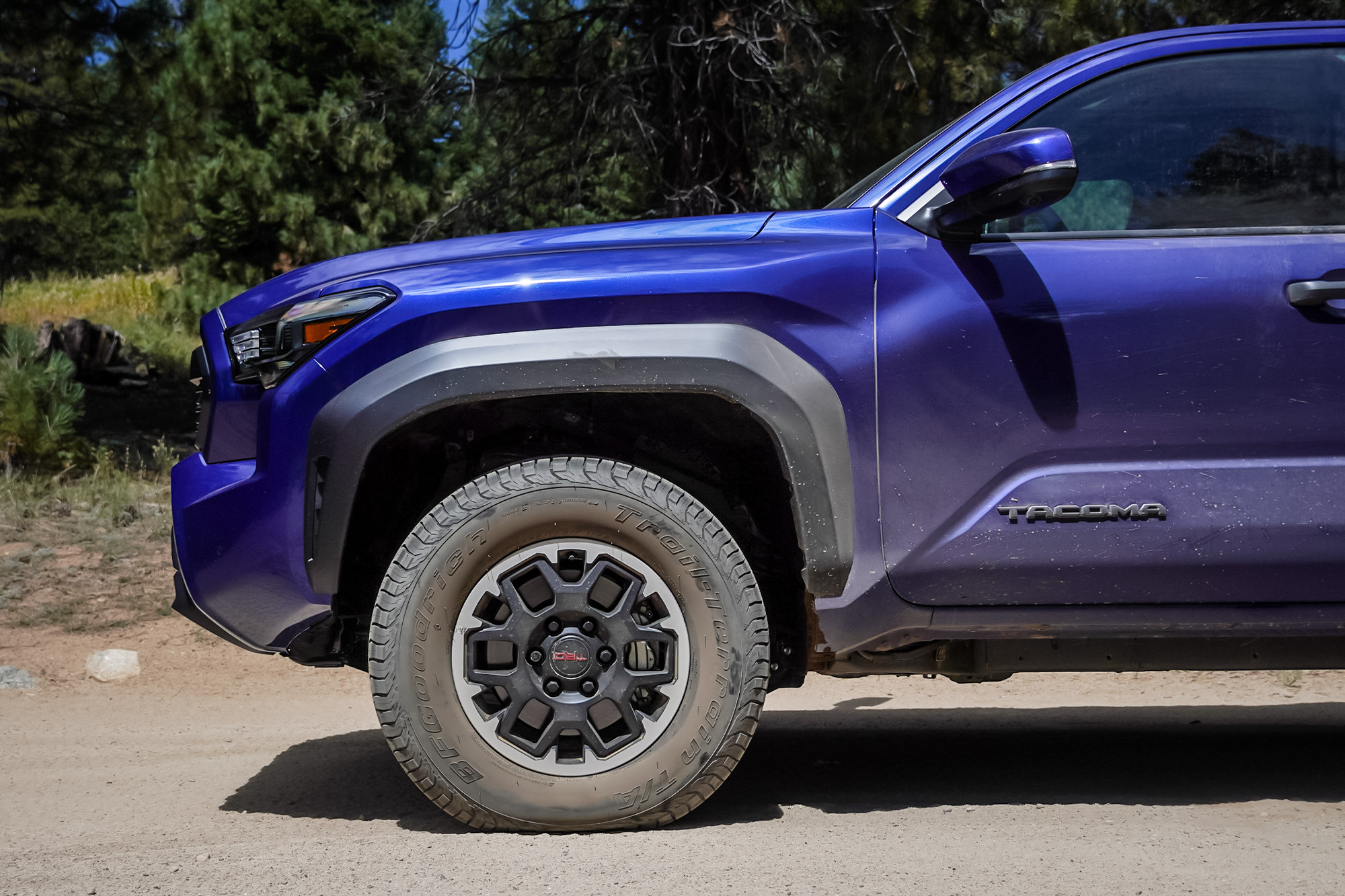
Other Tacoma Details Not Specific to the Manual
On smoother sections, keeping the engine in third and fourth let me focus on the rest of the TRD Off-Road package. I never truly needed the rear locker, but turned it on and off just in the name of science. The uprated suspension kept the Tacoma well-balanced, at least. But I wouldn’t call the suspension super refined. The shocks just can’t keep up with Ford’s Fox dampers or GM’s Multimatics.
For me, the disconnecting sway bar is the cherry on top — quite possibly my second favorite piece of modern automotive technology after ventilated seats, which this Tacoma thankfully also featured. But much like Jeep, Toyota programs the sway bar to reconnect at around 17-18 mph. This gets annoying, and Ford’s Raptors do so at higher speeds.
The BFG Trail Terrains actually surprised me. They allowed for a solid mix of compliance and grip when aired down to 22 psi. And at highway speeds, I only noticed a bit of road hum.

The rest of the truck, meanwhile, did not creak or rattle at all. Literally, not one bit. It’s one of those things you normally only realize later, but I kept an ear out on the trail. Very impressive, to say the least, especially while off-roading. And, a good sign for Toyota’s legendary build quality, even among some negative news lately.
The tiny backseat in the crew cab, plus the fact that I also packed motorcycle gear, meant I needed to put a lot of equipment in the small truck bed. For off-roading, I’d want a camper shell — or just an SUV. Even putting smaller items in the rear footwell required scooting the front seats forward first.
But Toyota believes that Tacoma owners very rarely haul humans in the backseat anyway. And for some reason, also that a 6-foot bed should only come with the automatic transmission, but not with the i-Force Max hybrid engine.
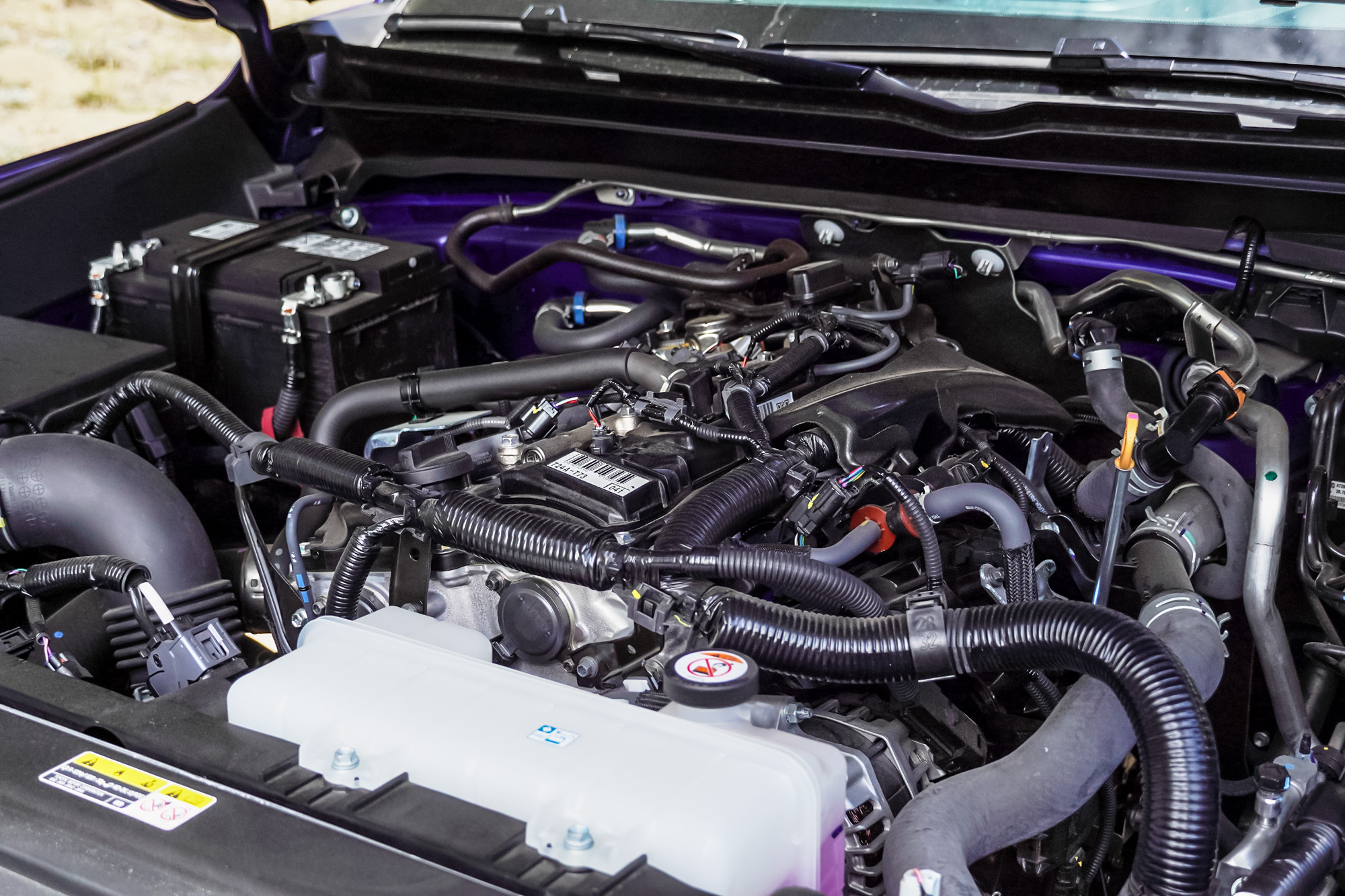
The Manual Tacoma’s Fuel Economy Is Pointless
Even if the stick shift presented any dubious pros while off-roading, the fuel economy numbers then render it pointless. The manual TRD Off-Road is technically rated for 19 mpg city and 23 mpg highway. Over the course of 1,200 miles of combined driving, I kept track of fuel receipts, and my math showed just under 20 mpg average. My best tank, entirely of highway miles in Eco mode, got just shy of 22 mpg. Not bad, but not great either.
Toyota might build the stick shift for international markets more than America. And I do appreciate the option to buy one here. But I cannot fathom the idea of buying a TRD Off-Road at over $53,000 and choosing the manual. The TRD Off-Road package adds $8,940 and another $1,230 for the sway-bar disconnect.
At that rate, the hybrid engine only costs $4,800 more — a relatively small price to pay for 326 horsepower and a whopping 495 pound-feet of torque. Plus, it comes with the eight-speed auto’s far better gear ratios. On top of that, it earns slightly better fuel economy ratings at 22/24 mpg.

2024 Tacoma TRD Off-Road Manual Review: Conclusions
For anyone who truly needs a manual Tacoma, I’d argue the third generation makes for a much better overall package. In this case, the fourth-gen does include improved connectivity and a better dash, but that’s about it. The powertrain just isn’t worth buying a new truck when we know a third-gen will run forever while holding value. And the hybrid engine with an 8-speed automatic truly renders the stick-shift fourth-gen Tacoma almost entirely pointless.

